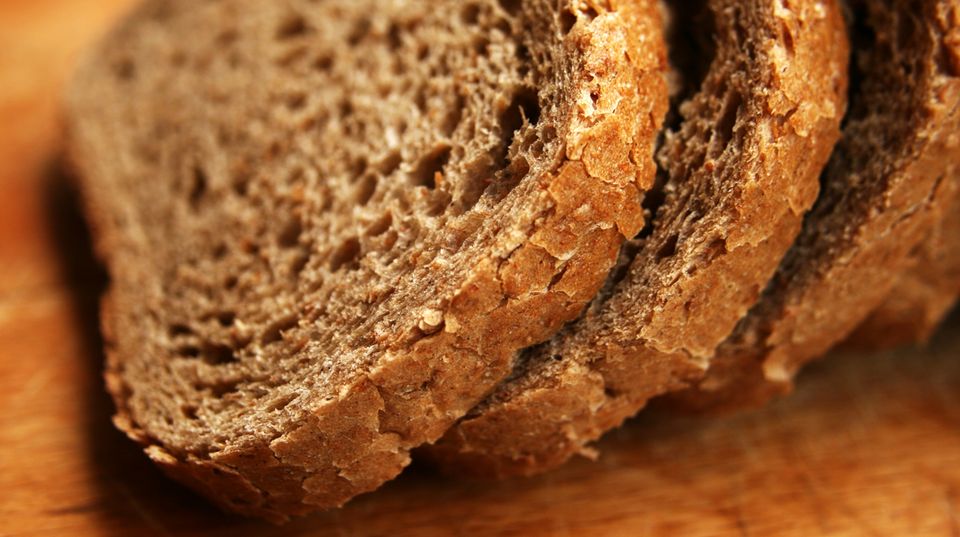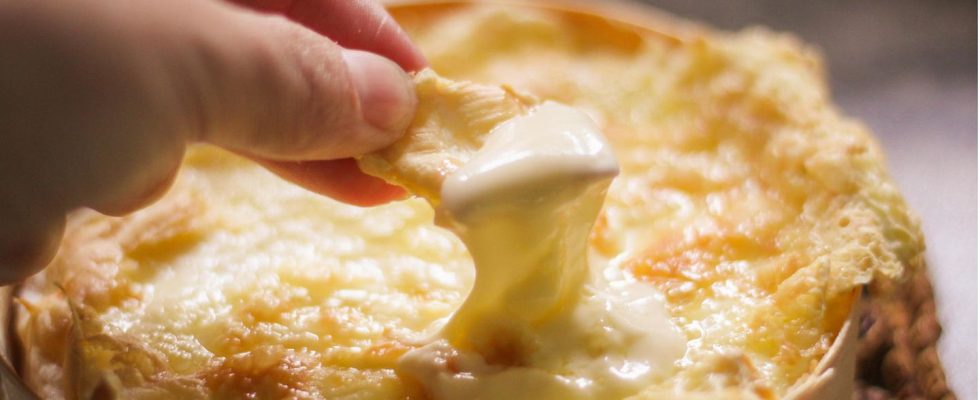Soul food
Classic without milk: recipe for a vegan oven cheese without cheese
Wonderfully creamy, spicy and warming – and all without cheese. A pleasure on cold days.
© MelanieMaya/Getty Images
On cold days we warm ourselves from the inside – with homemade vegan oven cheese. A cheesy treat without any cheese. You can find out how to make the vegan version of the classic here.
Autumn is here – and it doesn’t always show its golden side. When the days are getting shorter and darker, it’s getting colder outside and the wind is blowing through the streets, it’s time to make yourself comfortable at home.
Stormy days and drizzle are the number one argument for turning your home into a small oasis of well-being – in addition to fairy lights, autumn decorations and plenty of scented candles, the hours at home invite you to get creative in the kitchen.
What would be better than a warming, aromatic oven cheese? As French chef and author Guillaume Marinette said, “Melted cheese is fascinating: it warms the heart and body.” The cheese from the oven is the absolute soul food of the cold season – for example accompanied by a fresh baguette, crispy salad and a glass of red wine.
The oven cheese and its origins
The Vacherin Mont d’Or, which has been produced during the winter months in the French-Swiss border area for more than 200 years, can be considered the original form of the oven cheese. Once it has reached the right level of ripeness, its core is almost liquid. Vacherin is a soft cheese made from raw cow’s milk. The French expression Mont d’Or was created in the 19th century and has been officially considered a protected designation of origin since 1981. It can be translated as “Goldberg” – named after the mountain of the same name, Mont d’Or.
The oven cheese is similar in consistency to Vacherin, but is usually enjoyed warm. It can therefore also be seen as a simplified version of cheese fondue. There are a few myths surrounding the origin of cheese fondue. One says that fondue was invented by dairymen. Cut off from the environment, they tried out new recipe variations with the foods available to them – cheese and bread.
Some stories attribute the invention to the monks. Since they were not allowed to eat solid food during Lent, they satisfied their hunger by melting cheese – without breaking the fasting rule. Refined. Both those Switzerland and Savogen in France see themselves as the inventors of the popular cheese specialty. No wonder, after all, the two nations are considered absolute cheese specialists. In France, “Fondue Savoyarde” is even considered a national dish. Switzerland sees the origin of fondue in the Kappeler milk soup, which was eaten when peace was concluded in the first Kappeler War.
Wherever fondue – and therefore baked cheese – was actually invented remains unclear. The fact is that melted warm cheese makes you happy and is extremely popular. The only small drawback that remains is that it is usually made from cow’s milk…
The milk dilemma
… If you want to reduce your consumption of dairy products for ethical, health and ecological reasons or eat a completely vegan diet but don’t want to miss out on anything, sooner or later you will have to deal with the topic of “vegan substitute products”. Vegan cheese alternatives can now also be found in well-stocked supermarkets, but they usually cost many times as much as the original product. You will also look in vain for a vegan version of oven cheese. All the better that you can easily prepare it yourself.
Sophisticatedly veganized
The basis of the vegan oven cheese is cashew nuts. These ensure the creaminess and give a pleasant, nutty, mild taste. Cashews are an excellent source of vegetable fat and protein. They are also full of magnesium and phosphorus and can therefore support muscles, nerves, teeth and bones. Due to their high content of B vitamins, cashews are often referred to as ideal nerve food. They also contain large amounts of L-tryptophan, an amino acid from which the body produces serotonin, the so-called happiness hormone.
Yeast flakes, also known as nutritional or noble yeast, provide the typical cheesy taste. They also have binding properties and thus contribute to the creaminess. Yeast flakes are considered a real superfood. They are rich in vitamins B1, B2, B6 as well as pantothenic and folic acid. They also contain numerous trace elements, minerals and protein in the form of easily usable amino acids.

Cornstarch is used for binding. Alternatively, potato or corn starch, for example, can also be used. For those of you who like to experiment, tapioca starch is a good choice. Tapioca starch is the ground, dried pulp of the cassava plant. A fine, white powder with a neutral taste is created, which gives dishes a smooth, chewy texture – this makes the cheese particularly “cheese-like” and creates the typical “cheese strings”. To do this, replace the cornstarch with tapioca starch.
Plenty of garlic, herbs, salt and pepper round off the taste. Apple cider vinegar provides the necessary acidity, olive oil provides the final finish. Voilà – boiled and baked, your homemade vegan oven cheese is on the table. Bon appetit!
Recipe for homemade vegan oven cheese
Ingredients
- 100 grams of cashew nuts
- 250 milliliters of water
- 2 cloves of garlic
- 3 tablespoons nutritional yeast
- 1 tsp garlic granules
- 1 teaspoon apple cider vinegar, naturally cloudy
- 2 tablespoons cornstarch (alternative: potato starch)
- Salt
- pepper
- olive oil
- Herbs of your choice (rosemary or thyme)
preparation
- Allow the cashews to soak for at least an hour.
- Then put the seeds together with the water in a blender and process at the highest level until smooth.
- Peel the garlic cloves and add them to the mixture along with yeast flakes, granulated garlic, apple cider vinegar, starch, a pinch of salt and some pepper. Mix again.
- Pour the mixture into a saucepan and simmer over medium heat for three to four minutes until the mixture thickens. Stir constantly.
- Pour the mixture into an ovenproof dish.
- Garnish with herbs and a splash of olive oil and herbs and bake in a preheated oven at 180 degrees top/bottom heat for about 25 minutes. The longer the mixture is in the oven, the firmer the vegan oven cheese will be.
- As soon as the vegan oven cheese has a slightly golden skin, serve immediately.
Goes well with: Fresh bread or baguette and a colorful salad.


